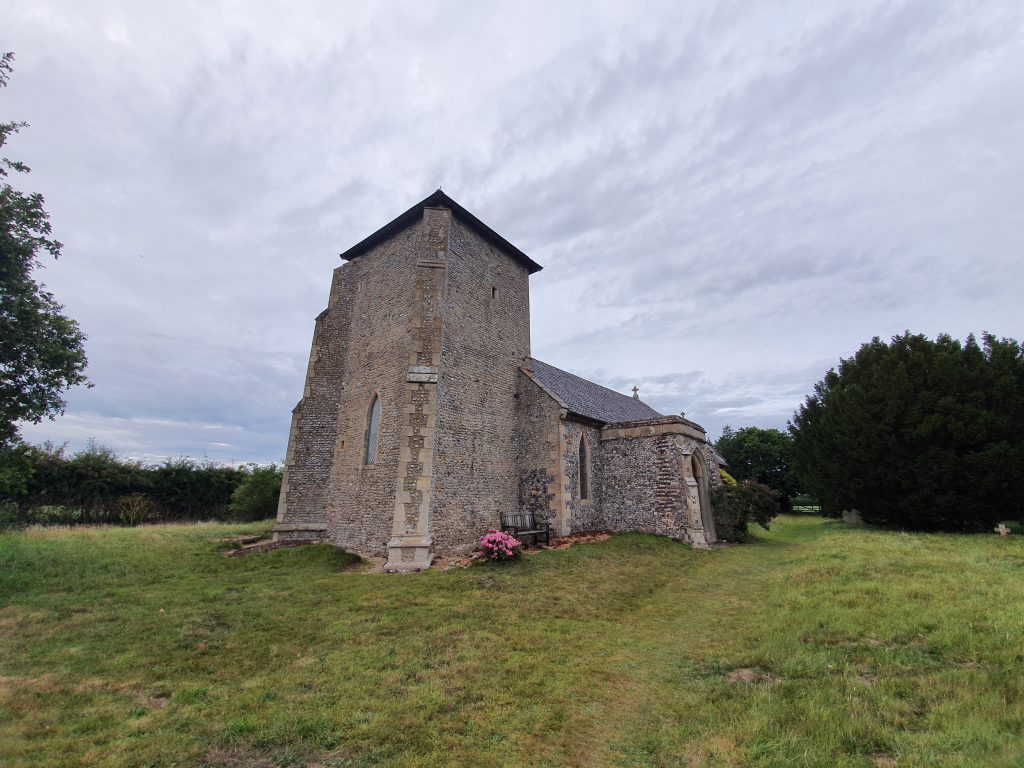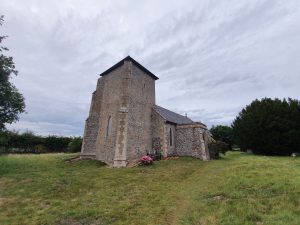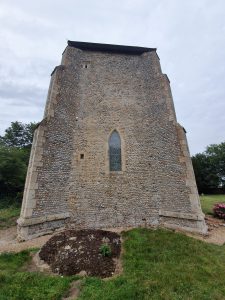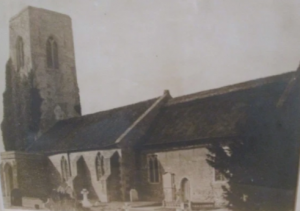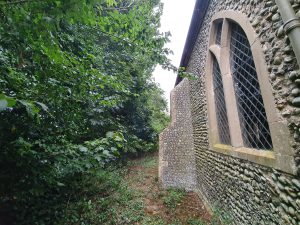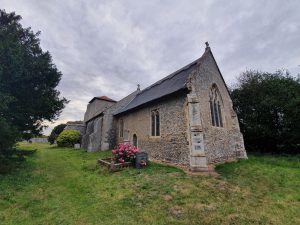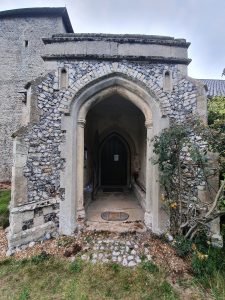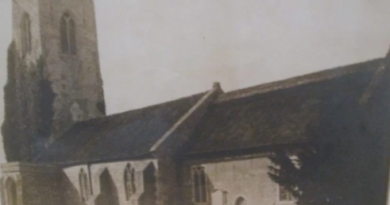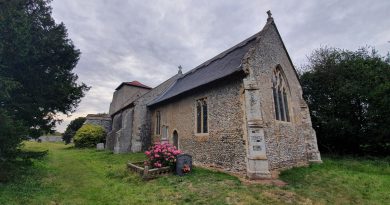Crostwight – All Saints’ Church
With the exception of the neighbouring rectory, this church stands alone in the fields but it’s clear that it’s still much loved by what local community there is. And, it’s a glorious church, albeit looking a little strange with its squat tower.
I had many theories for what had happened here, including perhaps a church building project that was halted mid-way through. It was clear from the lower part of the structure that there should be a taller tower here, and that was indeed the case, but it was taken down in 1910 as it was in risk of falling and was covered in ivy. I remember many years ago that there were a fair few churches covered in ivy, but now there are nearly none, they have learned from history.
There were warnings though even at the time, a Mr Haughton from Church Farm in nearby Ridlington wrote to the Eastern Daily Press in 1905 saying:
“Sirs, I am much concerned to see the damage which is being done to some of the churches in East Norfolk from ivy being allowed to grow over them. It is difficult to understand the apathy of the archdeacon, rural deans, clergy and churchwardens in allowing such a state of things, which in time must end in the ruin of these fine buildings. Ivy easily roots in these walls, gradually loosens the face flints and slowly but surely the work of destruction goes on.
I see ivy growing more or less strongly on the churches of Irstead, Crostwight, Walcott, East Ruston, Honing and Witton. Amongst these, the most notable example of the mischief which is being done is in Crostwight Church, strong growing ivy being now nearly to the top of the tower, which in consequence will soon be in a very bad condition.”
How right he was…. But he wasn’t the only one, in the previous year the Norfolk News had reported that Mr JC Cox had conducted a survey of churches in the area and he was worried about the state of the ivy at Crostwight. He noted “the notion that ivy holds up a building is one of the fond superstitions of Norfolk”. And that is likely why the ivy remained in so many places, many people were thinking that it actually supported and strengthened the building.
And here’s what the church used to look like, the church tower twice as high as it currently stands.
Most churches have access to walk alongside the nave, but this one was a little tighter.
The bulk of the current building dates from the fourteenth century and the exterior hasn’t much changed over the centuries. There’s some real charm to this building, a remote structure with no access to electricity.
The south porch was added in the fifteenth century, a homely little addition. I had a feeling that this church would be open, so I went into the porch with some confidence that this would be the case. And, it was, but more about this in another post, as there are some treasures inside.

